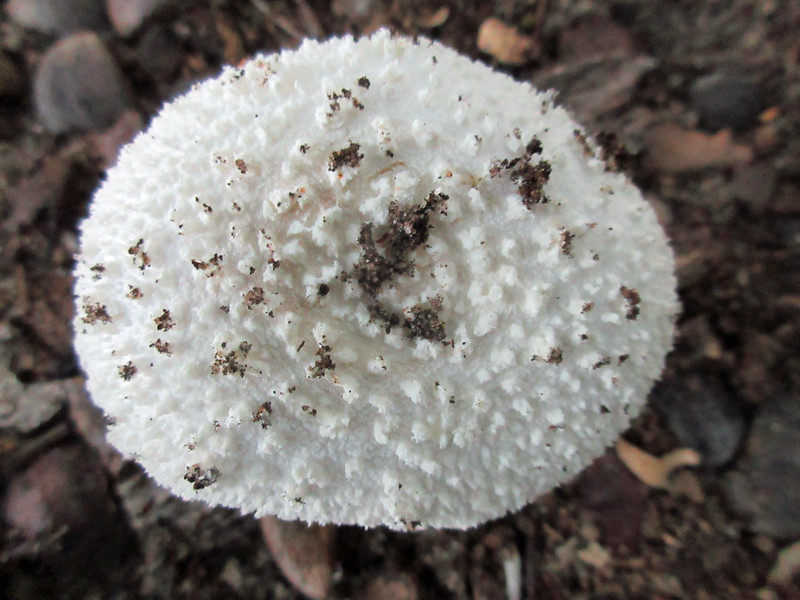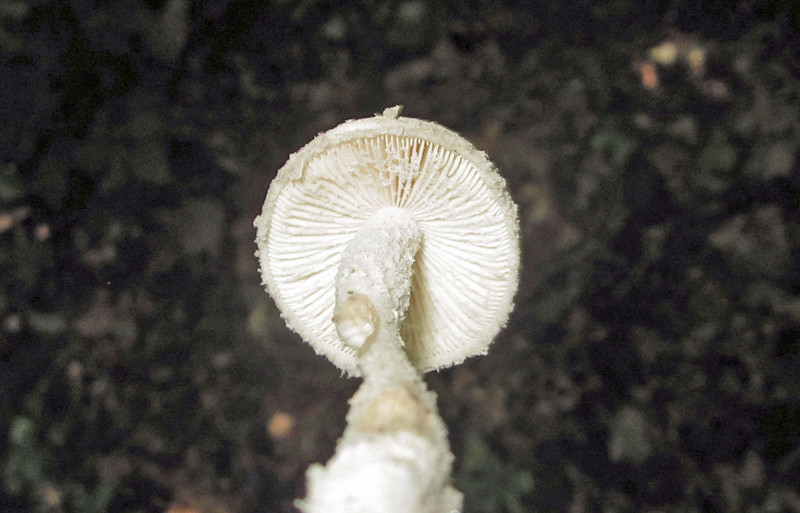Map Snapshot



5 Records
Status
Found solitary or groups, usually on sandy soil in oak–pine woods, occasionally in beech- hickory-oak.
Description
Fruiting body: Densely floccose. Cap: Hemispheric to broadly convex, dry, covered with soft powdery veil fragments and powdery warts, sometimes with marginal veil fragments, flesh white to pale gray; less than 10 cm. Gills: Close with powdery edges. Stalk: Evanescent white veil seldom leaves ring, white, powdery / scurfy, slightly enlarged downward, usually flattened or dog-legged / curved (or both), occasionally red stains at base, volva swollen and slightly rooted. (J. Solem, pers. comm.)
Seasonality Snapshot
Source: Wikipedia
| Amanita longipes | |
|---|---|

| |
| Several Amanita longipes fungi found growing at Ocala National Forest, Marion Co., Florida, United States. | |
| Scientific classification | |
| Domain: | Eukaryota |
| Kingdom: | Fungi |
| Division: | Basidiomycota |
| Class: | Agaricomycetes |
| Order: | Agaricales |
| Family: | Amanitaceae |
| Genus: | Amanita |
| Species: | A. longipes
|
| Binomial name | |
| Amanita longipes Bas ex Tulloss & Dav.T. Jenkins
| |
| Amanita longipes | |
|---|---|
| Gills on hymenium | |
| Cap is umbonate | |
| Hymenium is free | |
| Stipe has a ring and volva | |
| Spore print is white | |
| Ecology is mycorrhizal | |
| Edibility is unknown | |
Amanita longipes is a small mushroom species of the Amanita genus. It feeds on decaying leaves of some woods and can be found around the Appalachian Mountains. It is a food source for various insects.
Description
[edit]Cap
[edit]The cap is typically around 2.4–10.2 centimetres (1–4 inches) wide, is hemispheric at first then becoming broadly convex to plano-convex, occasionally also slightly depressed in center; white, pallid grayish-brown or grayish buff over disk in age, surface dull and tacky at first and becoming shiny.
Gills
[edit]The gills are usually narrowly adnate, sometimes with a decurrent line, close, whitish, becoming grayish-cream on drying, with white, floccose remnants of partial veil on edges, narrow, 4.5–11 mm (1⁄8–3⁄8 in) broad, sometimes anastomosing; the short gills are truncate to rounded truncate to attenuate to attenuate in steps, plentiful, of diverse lengths, unevenly distributed.
Stem
[edit]The stem is 2.5–14.2 cm (1–5+1⁄2 in) × 0.5–2 cm (1⁄4–3⁄4 in), white, and tapers upward slightly to a flaring apex. The stem is decorated with easily removed, floccose material especially in upper portion; the flesh of the stem usually does not take on a color when bruised. The flesh is white, occasionally graying in damaged areas, with a firmly stuffed central cylinder, up to 7 mm wide. The ring is fibrous-floccose and rapidly evanescent. Volval remnants are absent from the bulb and the stem base or difficult to distinguish.[1]
Toxicity
[edit]One guide lists this species' edibility as unknown but doubtful.[2] It should be avoided as many species of the genus are deadly.[3]
References
[edit]As of this edit, this article uses content from "Amanita longipes", which is licensed in a way that permits reuse under the Creative Commons Attribution-ShareAlike 3.0 Unported License, but not under the GFDL. All relevant terms must be followed.
- ^ "Amanita longipes". www.amanitaceae.org. Retrieved October 17, 2016.[title missing]
- ^ Phillips, Roger (2010). Mushrooms and Other Fungi of North America. Buffalo, NY: Firefly Books. pp. 24–25. ISBN 978-1-55407-651-2.
- ^ Lincoff, Gary (1981). National Audubon Society Field Guide to Muschrooms. Knopf; A Chanticleer Press ed edition. p. 25. ISBN 0-394-51992-2.












